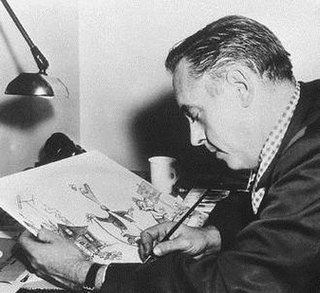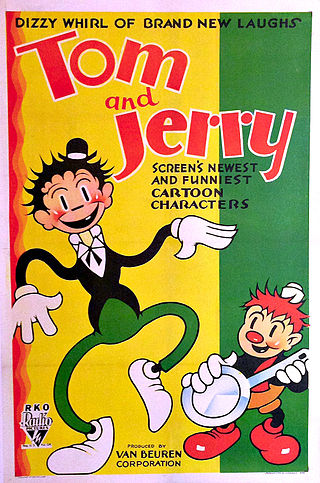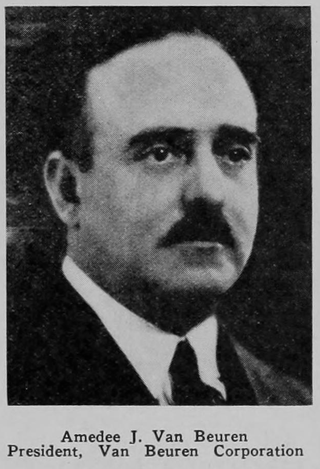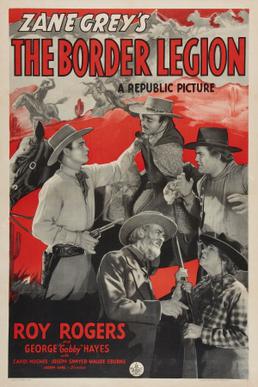Related Research Articles

The golden age of American animation was a period that began with the popularization of sound synchronized cartoons in 1928 and gradually ended in the 1960s when theatrical animated shorts started to lose popularity to the newer medium of television. Animated media from after the golden age, especially on television, were produced on cheaper budgets and with more limited techniques between the late 1950s and 1980s.

Frank Tashlin, also known as Tish Tash and Frank Tash, was an American animator and filmmaker. He was best known for his work on the Looney Tunes and Merrie Melodies series of animated shorts for Warner Bros., as well as his work as a director of live-action comedy films.
Hugh Harman and Rudolf Ising were an American animation team and company known for founding the Warner Bros. and Metro-Goldwyn-Mayer animation studios. In 1929, the studio was founded under the name Harman-Ising Productions, producing Looney Tunes and Merrie Melodies for Leon Schlesinger from 1930 to 1933. From 1934 to 1938, Harman-Ising produced the Happy Harmonies series, with William Hanna as their employee.
The Van Beuren Corporation was a New York City-based animation studio that produced theatrical cartoons as well as live-action short-subjects from the 1920s to 1936.

Tom and Jerry are fictional characters that starred in a series of early sound cartoons produced by the Van Beuren Studios, and distributed by RKO Pictures. The series lasted from 1931 to 1933.

Burton F. Gillett was a director of animated films. He is noted for his Silly Symphonies work for Disney, particularly the 1932 short film Flowers and Trees and the 1933 short film Three Little Pigs, both of which were awarded the Academy Award for Best Animated Short Film and both of which were selected for inclusion in the National Film Registry.
Color Rhapsody is a series of usually one-shot animated cartoon shorts produced by Charles Mintz's studio Screen Gems for Columbia Pictures. They were launched in 1934, following the phenomenal success of Walt Disney's Technicolor Silly Symphonies and Warner Bros.' Merrie Melodies. Because of Disney's exclusive rights to the full three strip Technicolor process, Color Rhapsody films were produced in the older two-tone Technicolor process until 1935, when Disney's exclusive contract expired.

Halas and Batchelor was a British animation company founded by husband and wife John Halas and Joy Batchelor. Halas was a Hungarian émigré to the United Kingdom. The company had studios in London and Cainscross, in the Stroud District of Gloucestershire.

Rainbow Parade is a series of 26 animated shorts produced by Van Beuren Studios and distributed to theaters by RKO between 1934 and 1936. This was the only color cartoon series produced by Van Beuren, and the final series of the studio.

Joan Lowell was a movie actress of the silent film era from Berkeley, California. Lowell published a sensational autobiography, Cradle of the Deep, in 1929, which turned out to be fictionalized.

Winston Singleton Sharples was an American composer known for his work with animated short subjects, especially those created by the animation department at Paramount Pictures. In his 35-year career, Sharples scored more than 700 cartoons for Paramount and Famous Studios, and composed music for two Frank Buck films, Wild Cargo (1934) and Fang and Claw (1935).

Amedee J. Van Beuren was the producer of Frank Buck's first three films, as well as many cartoons and short films.
Stacy Robert Woodard was a producer, cinematographer, and editor of nature films, who with his brother Horace Woodard edited Frank Buck's film Fang and Claw.
Ted Eshbaugh was an American animation filmmaker, best known as one of the first filmmakers to experiment with color sound cartoons in the early 1930s, which included Goofy Goat and The Wizard of Oz.
William Charles Littlejohn was an American animator and union organizer. Littlejohn worked on animated shorts and features in the 1930s through to the 1990s. His notable works include the Tom and Jerry shorts, the Peanuts television specials, the Oscar-winning short The Hole (1962), and the Oscar-nominated A Doonesbury Special (1977). He was inducted into the Cartoon Hall of Fame and received the Winsor McCay Award and garnered lifetime achievement awards from the Annie Awards and the UCLA Film and Television Archive. Director Michael Sporn has called Littlejohn "an animation 'God'."
Horace Woodard was an American film producer and cinematographer of short films.
Jolly Little Elves is a 1934 animated short film by Walter Lantz. The cartoon was nominated at the 7th Academy Awards for Best Animated Short Film. The short was part of Lantz's Cartune Classics series.

The Border Legion is a 1940 American Western film directed by Joseph Kane and written by Olive Cooper and Louis Stevens. It is based on the 1916 novel The Border Legion by Zane Grey. The film stars Roy Rogers, George "Gabby" Hayes, Carol Hughes, Joe Sawyer, Maude Eburne and Jay Novello. The film was released on December 5, 1940, by Republic Pictures.

Milton Mouse is an animated character created at Fables Studios for Paul Terry's cartoon series Aesop's Fables. The character was introduced in 1921, and appeared in dozens of cartoon shorts through 1931. Milton often appeared alongside a girlfriend mouse, usually named Rita.
References
- 1 2 Erickson, Hal (October 1, 2020). A Van Beuren Production: A History of the 619 Cartoons, 875 Live Action Shorts, Four Feature Films and One Serial of Amedee Van Beuren. McFarland. ISBN 9781476640983 – via Google Books.
- ↑ Erickson, Hal (October 1, 2020). A Van Beuren Production: A History of the 619 Cartoons, 875 Live Action Shorts, Four Feature Films and One Serial of Amedee Van Beuren. McFarland. ISBN 9781476640983 – via Google Books.
- ↑ "Catalog of Copyright Entries". 1933.
- ↑ THOMAS M. PRYOR. FULFILLING A PROMISE; Film Producers Open Their Vaults to Promote Education by Pictures. New York Times July 9, 1939, Sunday p 113
- ↑ "The 7th Academy Awards (1935) Nominees and Winners". oscars.org. Archived from the original on July 6, 2011. Retrieved August 7, 2011.
- ↑ "New York Times: City of Wax". Movies & TV Dept. The New York Times . 2011. Archived from the original on May 20, 2011. Retrieved May 12, 2008.
- ↑ "Preserved Projects". Academy Film Archive.